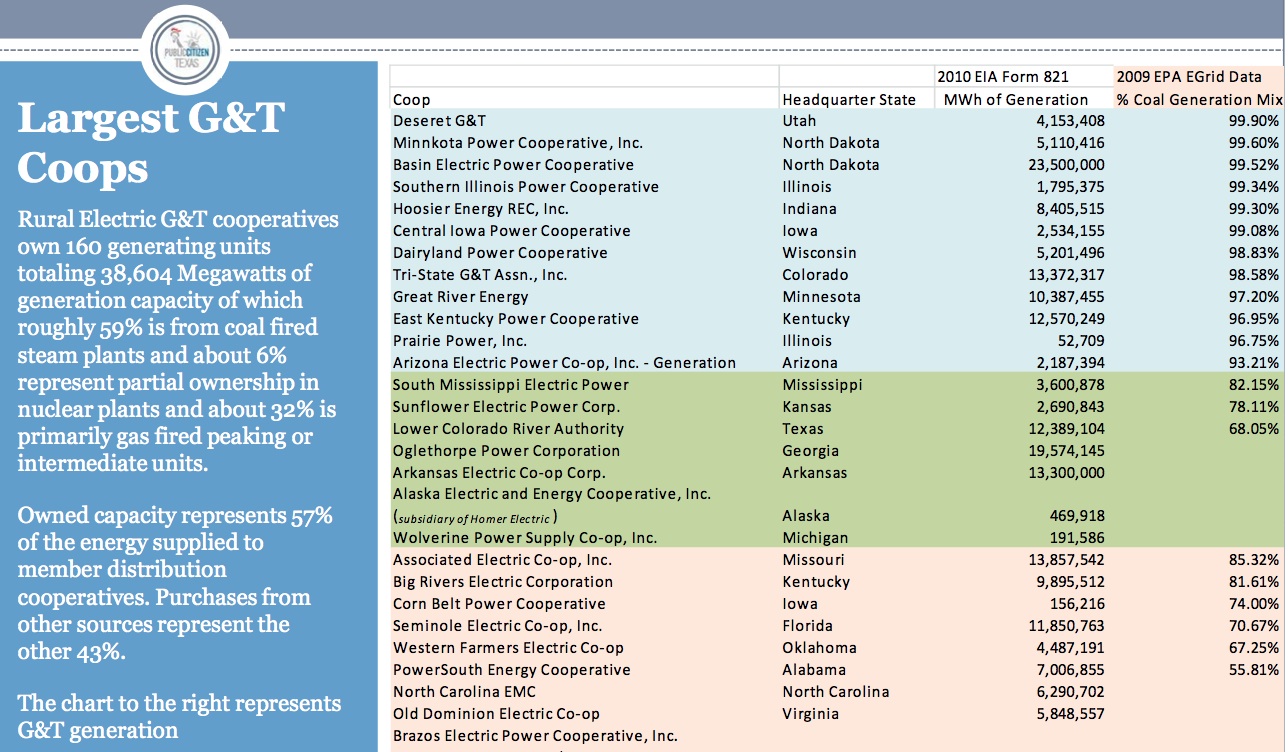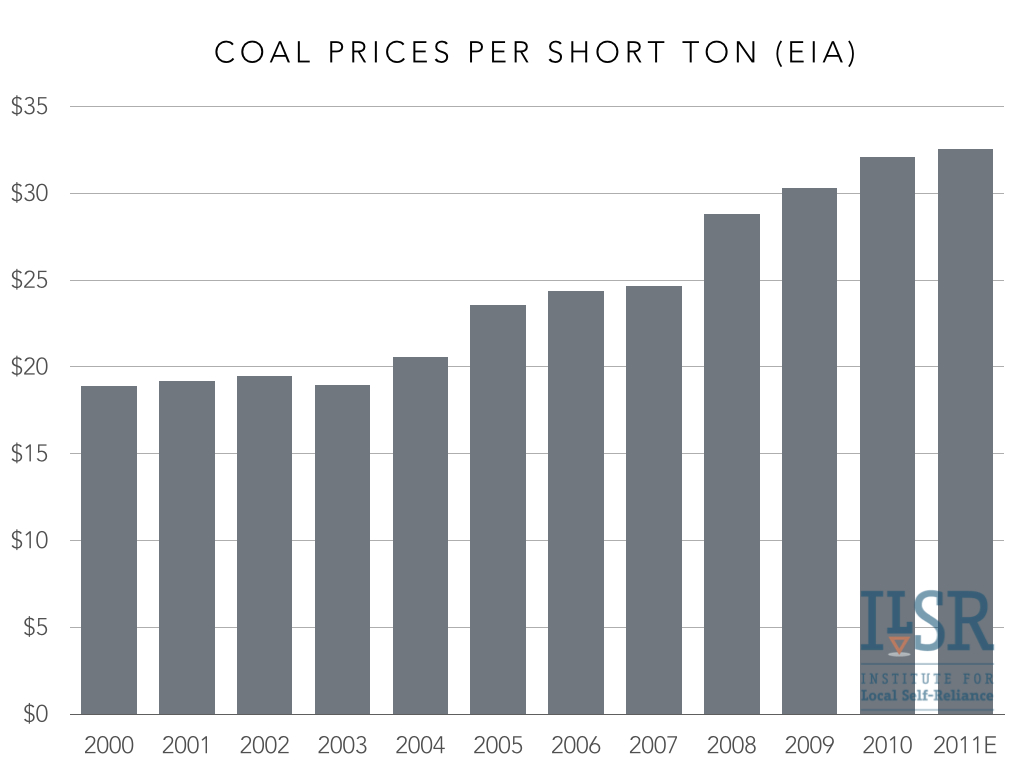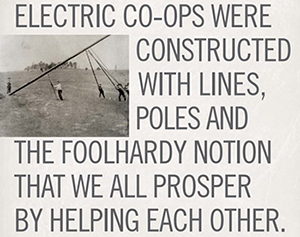When it comes to ownership, there are few better structures for keeping a community’s wealth local than a cooperative. So why is it that America’s rural electric cooperatives are tethered to dirty, old coal-fired power plants instead of local-wealth generating renewable power?
There are a lot of answers to this question, but it might start with this: electric cooperatives aren’t quite like other cooperatives.
The Seven Slipping Cooperative Principles
Cooperatives around the world adhere to the “Seven Cooperative Principles,” but electric cooperatives (at least in the United States) fail on several of these principles.
- Voluntary and open membership. Nope. If you want electric service in cooperative territory, you sign with the cooperative. While it’s no different than rules for other types of utilities in the 30 states that grant utilities a monopoly service territory, it violates the principles of cooperatives.
- Democratic control (one member, one vote). Not always. Some electric cooperatives award one vote per meter, and some customers (e.g. farmers, industry) have more than one meter. Furthermore, many cooperatives filter potential board candidates with “nominating committees.” And look, here’s a board election with no opposition!There’s also a big gap between cooperative member support for (paying more for) renewable energy and cooperative behavior. This 2013 survey in Minnesota, for example, shows little separation between urban and rural areas (where cooperatives are dominant) in support for renewable energy, yet cooperatives opposed every bill favoring clean energy in the 2013 legislative session.
- Members control the capital of the cooperative.
- Cooperatives maintain their autonomy and independence even if they enter into agreements with other entities. Questionable. Many cooperatives sign 40- or even 50-year purchase contracts with power suppliers to supply 95% of their entire sales, mostly from coal-fired power plants. Standard and Poor’s explains this in an evaluation of a Seminole Electric in Florida, a generation & transmission cooperative that sells to rural cooperatives. In their words, one of the utility’s credit strengths is, “A captive retail market and the ability to set rates through take-and-pay, all-requirements wholesale power agreements with nine of 10 members through 2045.”
- Cooperatives provide educational opportunities to their members and the public on the benefits of cooperatives. Questionable. If you read rural electric cooperative newsletters, you’ll hear a lot about climate change but you’ll often find the phrase in quotes
- Cooperatives work best when cooperating with other cooperatives. Questionable, refer to #4. Some of these power suppliers are “co-ops of co-ops,” but these long-term contracts have tethered the economic fortunes of cooperative members to the vagaries of the coal market (see below). More than any other type of utility (public or investor-owned), rural electric cooperatives are reliant on coal for their electricity fuel. The average U.S. utility is 38% coal-fired power.


- Cooperatives work for sustainable development of their community. Not enough. Most cooperatives rely heavily on imported power purchased on long-term contracts with the goal of cheap power, but that ironically leave them at the mercy of unfettered price increases. They also have missed an enormous economic development opportunity from renewable energy. For example:Renewable energy provides significant economic impacts ($1 million per megawatt of wind, $250,000 per megawatt for solar) with multipliers for local (i.e. cooperative) ownership (up to 3.5 times more local economic impact, and twice as many jobs). Wind and solar provide more jobs per megawatt of power capacity, as well.
 Finally, rural electric cooperatives have organized a 1 million comment campaign against EPA regulations of carbon pollution from power plants. Hardly a commitment to “sustainable development.”
Finally, rural electric cooperatives have organized a 1 million comment campaign against EPA regulations of carbon pollution from power plants. Hardly a commitment to “sustainable development.”
How Can Cooperatives Change?
Restoring their 7 principles could do a lot. Improving their structure so that the cooperative directors reflect member opinion on renewable energy would restore the principle of democratic control. Avoiding ridiculously long power purchase contracts would provide local cooperatives with real autonomy and control of their energy costs and options. Broadening their focus on economic development beyond cheap power to include renewable energy would make “sustainable development” much more realistic.
Can it happen? It already has, in Iowa and on Kaua’i, and there are more tools that ever at their disposal. But as with electrification, no one will do it unless they do it themselves.





